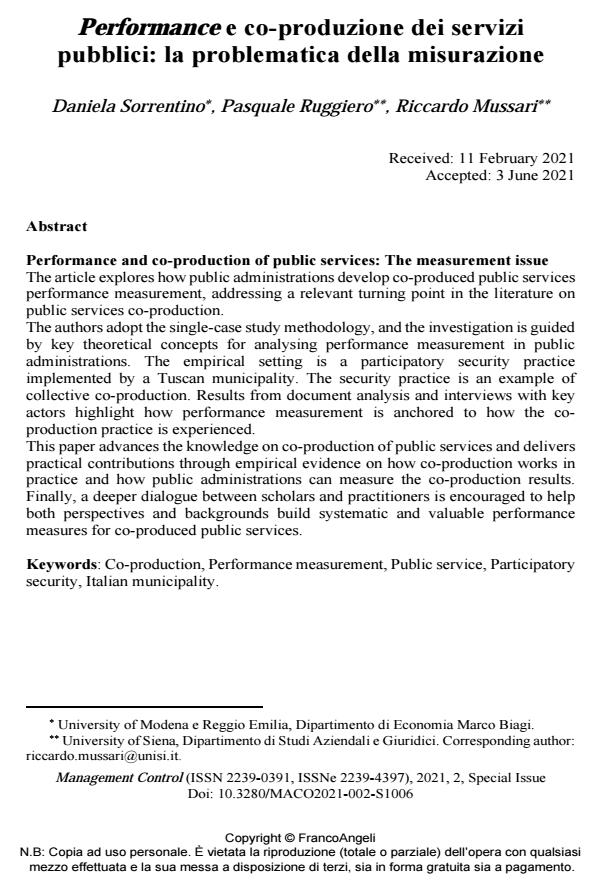Performance and co-production of public services: The measurement issue
Journal title MANAGEMENT CONTROL
Author/s Daniela Sorrentino, Pasquale Ruggiero, Riccardo Mussari
Publishing Year 2021 Issue 2021/suppl. 2
Language Italian Pages 27 P. 115-141 File size 271 KB
DOI 10.3280/MACO2021-002-S1006
DOI is like a bar code for intellectual property: to have more infomation
click here
Below, you can see the article first page
If you want to buy this article in PDF format, you can do it, following the instructions to buy download credits

FrancoAngeli is member of Publishers International Linking Association, Inc (PILA), a not-for-profit association which run the CrossRef service enabling links to and from online scholarly content.
The article explores how public administrations develop co-produced public services performance measurement, addressing a relevant turning point in the literature on public services co-production. The authors adopt the single-case study methodology, and the investigation is guided by key theoretical concepts for analysing performance measurement in public administrations. The empirical setting is a participatory security practice implemented by a Tuscan municipality. The security practice is an example of collective co-production. Results from document analysis and interviews with key actors highlight how performance measurement is anchored to how the co-production practice is experienced. This paper advances the knowledge on co-production of public services and delivers practical contributions through empirical evidence on how co-production works in practice and how public administrations can measure the co-production results. Finally, a deeper dialogue between scholars and practitioners is encouraged to help both perspectives and backgrounds build systematic and valuable performance measures for co-produced public services.
Keywords: Co-production, Performance measurement, Public service, Participa-tory security, Italian municipality.
- Gestione integrata dei dati e misurazione della performance nei network inter-municipali: un'analisi sistematica della letteratura Luca Mazzara, Francesco Bergamaschi, Giulia Leoni, in MANAGEMENT CONTROL 2/2022 pp.91
DOI: 10.3280/MACO2022-002005
Daniela Sorrentino, Pasquale Ruggiero, Riccardo Mussari, Performance e co-produzione dei servizi pubblici: la problematica della misurazione in "MANAGEMENT CONTROL" suppl. 2/2021, pp 115-141, DOI: 10.3280/MACO2021-002-S1006